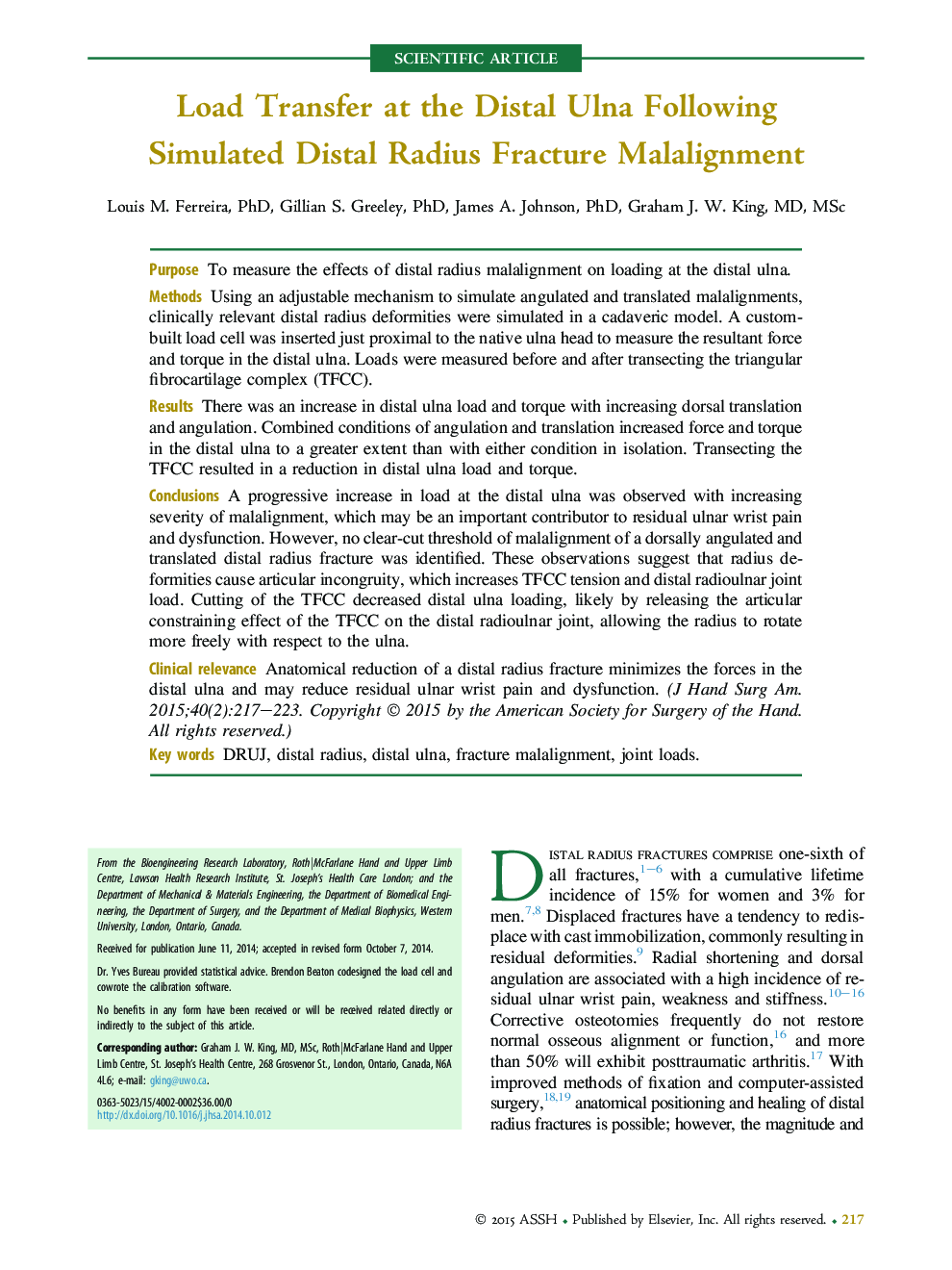| Article ID | Journal | Published Year | Pages | File Type |
|---|---|---|---|---|
| 4067235 | The Journal of Hand Surgery | 2015 | 7 Pages |
PurposeTo measure the effects of distal radius malalignment on loading at the distal ulna.MethodsUsing an adjustable mechanism to simulate angulated and translated malalignments, clinically relevant distal radius deformities were simulated in a cadaveric model. A custom-built load cell was inserted just proximal to the native ulna head to measure the resultant force and torque in the distal ulna. Loads were measured before and after transecting the triangular fibrocartilage complex (TFCC).ResultsThere was an increase in distal ulna load and torque with increasing dorsal translation and angulation. Combined conditions of angulation and translation increased force and torque in the distal ulna to a greater extent than with either condition in isolation. Transecting the TFCC resulted in a reduction in distal ulna load and torque.ConclusionsA progressive increase in load at the distal ulna was observed with increasing severity of malalignment, which may be an important contributor to residual ulnar wrist pain and dysfunction. However, no clear-cut threshold of malalignment of a dorsally angulated and translated distal radius fracture was identified. These observations suggest that radius deformities cause articular incongruity, which increases TFCC tension and distal radioulnar joint load. Cutting of the TFCC decreased distal ulna loading, likely by releasing the articular constraining effect of the TFCC on the distal radioulnar joint, allowing the radius to rotate more freely with respect to the ulna.Clinical relevanceAnatomical reduction of a distal radius fracture minimizes the forces in the distal ulna and may reduce residual ulnar wrist pain and dysfunction.
